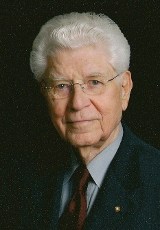THE WAY I REMEMBER IT
It was a struggle -- getting Austin's business, professional and educational communities to accept the fact that we needed to broaden our economic, and tax base. Many of the community leaders had it comfortably "made," and were hesitant to encourage or support any change. I soon learned that what I had learned from my visits to the Stanford Industrial Park, the North Caroline Golden Triangle and Boston's Loop 128, was not well known, or accepted by many Austin leaders.
Here I was, the only person in Austin with the results of the U of T study in my mind, plus some first hand knowledge of how the leading high tech areas were developing. I had an educational job on my hands. Many people still thought of any "industry" as dirty factories such as the smelly Port Arthur refineries or the Youngstown steel mills. They visualized the workers and men in dirty overalls carrying a lunch bucket and stopping at the local bar for an hour or two on the way home. He was the kind of guy that would make lewd remarks to your daughter as they met on the street.
Now, here was a pretty tall order for a young outsider. I had been told when I first came to work in Austin that it was not "what you know," but "who you know." Well, I didn't know a single who when Helen and first moved there in 1953, and in just a little over two years I had become the CEO of the Austin Chamber of Commerce. Maybe selling Austin on the idea that broadening its economy would be beneficial to almost everyone - was not impossible.
So, I wrote a plan, and began discussing it with individual leaders in Austin, I tried to pick people likely to agree with such an effort - many in real estate and banking. Leon Stone, President of the Austin National Bank was perhaps the leader in the business community. But I needed strong support from the University of Texas, since I had observed that the other budding high tech areas were all near major universities.
I found that person in the Director of the Balcones Research Center (now J.J. Pickle), J. Niels Thompson. He had attended one of our meetings and pointed out the close relationship that there should be between industry and education since education supplies the future brainpower for industry. I latched on to him like a leach, and through him was able to schedule meetings with deans and administrators.
For the general community, though, there were two main points that needed to be understood to gain their support. 1) Although the State and the University were our largest sources of personal income, they made up about fifty percent of our property along with churches and schools-all paying no property taxes. If this segment of our city kept on getting larger, and the taxpaying segment became a smaller percentage of the whole, the homeowner would soon be paying unbearable taxes. 2) We were exporting our most valuable commodity - our educated children. Job opportunities outside of the state or university were scarce, and not too rewarding.
Parents and grandparents, workers in both the private and public sectors, understood both of these, so after four years of "educating," we launched The Austin Economic Development Council.
Vic Mathias - January 5, 2005

